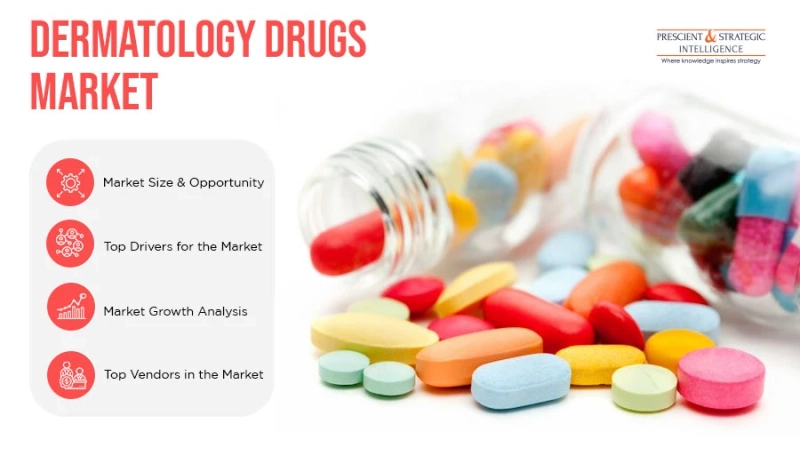Factors such as the rising prevalence of dermatological illnesses, growing awareness on skin diseases, surging aging population, increasing healthcare spending, rising number of research programs, and increasing disposable income of people in emerging economies are projected to propel the growth of the dermatology drugs market at a CAGR of 8.8% during the forecast period (2020–2030). At this growth rate, the market size is expected to reach $55,425.0 million by 2030 from $25,228.2 million in 2019. Moreover, the market is witnessing an increasing number of product approvals by regulatory agencies.
Receive Sample Copy of this Report: https://www.psmarketresearch.com/market-analysis/dermatology-drug-market/report-sample
One of the prime factors propelling the dermatology drugs market is the rising prevalence of dermatological illnesses. Aging, environmental and genetic factors, and trauma can cause several skin diseases, which are among the leading reasons for the non-fatal disease burden across the world. As per the World Health Organization (WHO), skin conditions, such as pyoderma, acne, scabies, warts, and eczema, affect almost 900 million individuals, globally, at any given time. Thus, the demand for associated drugs is increasing to treat the rising cases of such skin diseases.
The treatment segment of the dermatology drugs market is categorized into topical corticosteroids, biologics, retinoids, antihistamines, calcineurin inhibitors, and hormone therapy. Among these, the topical corticosteroids category is projected to lead the market in the coming years. This can be ascribed to the creation of advanced molecules with state-of-the-art galenic formulations and the development of novel therapeutics. Also, topical corticosteroids are the easiest to use, requiring merely to be rubbed on the skin.
Geographically, Asia-Pacific (APAC) is projected to record the highest CAGR during the forecast period. This can be due to the surging disposable income, increasing prevalence of skin diseases, and rising healthcare spending in regional countries. For example, as per the World Bank, China spent 5.15% of its gross domestic product (GDP) on healthcare in 2017. Whereas, North America held the largest market share in 2019, owing to the growing awareness on skin illnesses, presence of major players, large number of drugs in the pipeline, and high disposable income in the region.
Thus, the rising incidence of dermatological illnesses and the surging healthcare spending are expected to propel the demand for the associated drugs during the forecast period.


